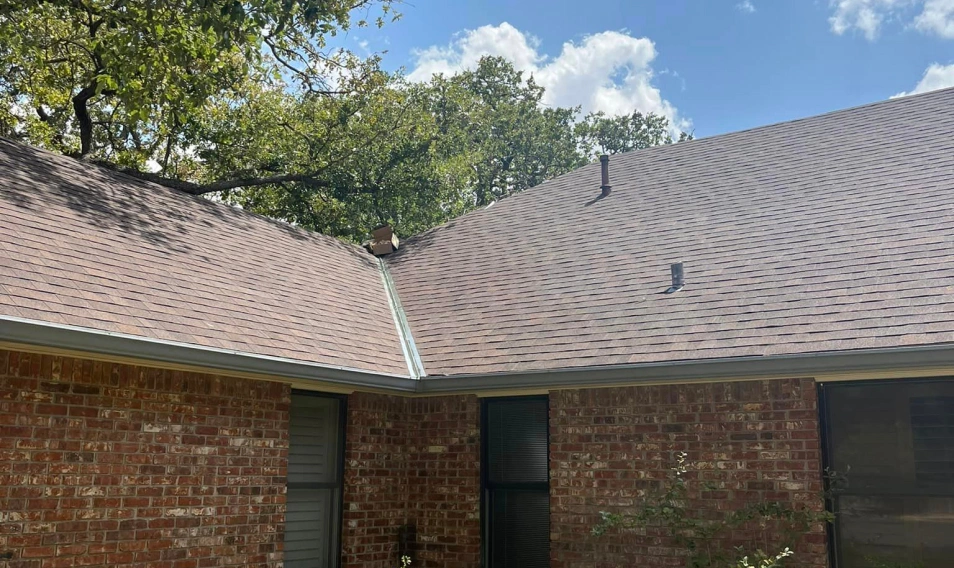As storm season approaches in Texas, preparing your home for harsh weather conditions is essential. One of the most critical parts of your home to inspect and maintain is the roof. Neglecting roof maintenance can lead to severe damage during storms, potentially resulting in costly repairs or even a full roof replacement. To help you stay protected, here are 10 key signs your roof needs repair before storm season arrives.
1. Missing or Damaged Shingles
Shingles play a vital role in protecting your home from the elements. If you notice missing, cracked, or curled shingles, your roof’s ability to shield against rain and wind is compromised. Damaged shingles can allow water to seep into the underlayment, leading to leaks and water damage inside your home. Inspect your roof for any visible damage and address it promptly to avoid further complications.
2. Granule Loss
Granules on asphalt shingles serve as a protective layer against UV rays and harsh weather conditions. If you find excessive granules in your gutters or downspouts, it indicates your shingles are wearing down and may need replacement. Granule loss reduces the lifespan of your shingles and increases the risk of water infiltration during heavy rainstorms.
3. Sagging Roof Deck
A sagging roof deck is a serious sign of structural damage. It often indicates trapped moisture or underlying structural issues such as rotting wood. If you notice a dip or sag in your roofline, immediate professional inspection and repair are necessary. Ignoring this issue could lead to a complete roof collapse during a severe storm.
4. Water Stains on Ceilings or Walls
Water stains inside your home, particularly on ceilings and walls, often point to a leaky roof. These stains can appear as yellow or brown discolorations and may expand over time if not addressed. Leaks can lead to mold growth and structural damage if left untreated. Identifying the source of the leak and repairing it before storm season can prevent extensive interior damage.
5. Damaged Flashing
Flashing is the material used to seal roof joints and prevent water from entering vulnerable areas like chimneys, vents, and skylights. If the flashing is cracked, bent, or corroded, water can easily penetrate your home. Properly sealing these areas before storm season ensures your home remains watertight during heavy rain and high winds.
6. Moss and Algae Growth
Moss, algae, and mold growth on your roof are more than just an aesthetic issue—they can damage your roofing materials over time. Moss tends to retain moisture, which can weaken shingles and cause them to lift. Algae and mold can also degrade roofing materials and contribute to roof rot. Cleaning and treating your roof can prevent further damage and extend its lifespan.
7. Sunlight Coming Through the Attic
If you notice beams of sunlight coming through your attic ceiling, it’s a clear sign that there are gaps or holes in your roof. These openings can allow rainwater to enter during a storm, leading to leaks and water damage. Inspect your attic during the day for any visible light penetration and have a professional repair any gaps.
8. Clogged or Damaged Gutters
Your gutter system plays a crucial role in directing rainwater away from your roof and foundation. Clogged or damaged gutters can cause water to back up onto your roof, leading to leaks and water damage. Check your gutters for debris buildup, rust, or detachment. Ensure they are properly cleaned and securely fastened before storm season.
9. High Energy Bills
Unexpectedly high energy bills can be a sign of poor roof insulation or ventilation. Damaged roofing materials or inadequate attic insulation can allow heat or cold air to escape, forcing your HVAC system to work harder. Inspect your roof’s insulation and ventilation to ensure it’s functioning efficiently before storm season arrives.
10. Age of Your Roof
If your roof is nearing the end of its lifespan, it may be more vulnerable to storm damage. Asphalt shingle roofs typically last 20-25 years, while metal and tile roofs can last longer. If your roof is older, it’s wise to have a professional inspection to assess its condition and determine if repairs or a replacement are necessary before storm season.
Why Timely Roof Repairs Matter Before Storm Season
Delaying roof repairs can result in severe consequences during storm season, including:
- Increased Damage: Minor issues can quickly escalate into major structural damage
- Costlier Repairs: Ignoring small repairs now can lead to expensive restoration work later
- Insurance Complications: Unaddressed roof issues might complicate insurance claims after storm damage
- Personal Safety Risks: A compromised roof can lead to dangerous situations during high winds and heavy rain
Steps to Prepare Your Roof for Storm Season
To ensure your roof is ready for storm season, consider taking these proactive steps:
- Schedule a Professional Inspection: Hire a licensed Weatherford roofing contractor to assess your roof’s condition
- Clear Debris: Remove leaves, branches, and dirt from your roof and gutters
- Repair Minor Issues: Address any damaged shingles, flashing, or seals promptly
- Check Attic Ventilation: Ensure proper airflow to prevent moisture buildup
- Secure Loose Items: Reinforce any loose roofing components
Conclusion
Your roof is your home’s first line of defense during storm season. By recognizing these 10 warning signs and addressing them promptly, you can protect your property from costly damage and ensure your family stays safe. Don’t wait until it’s too late—schedule a professional roof inspection today and make necessary repairs to prepare for Texas’ unpredictable storm season.






